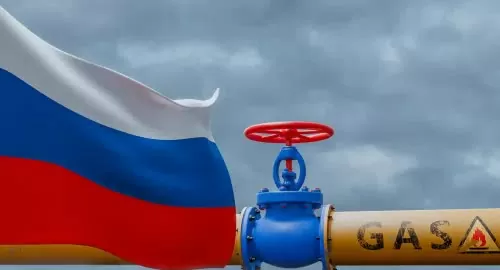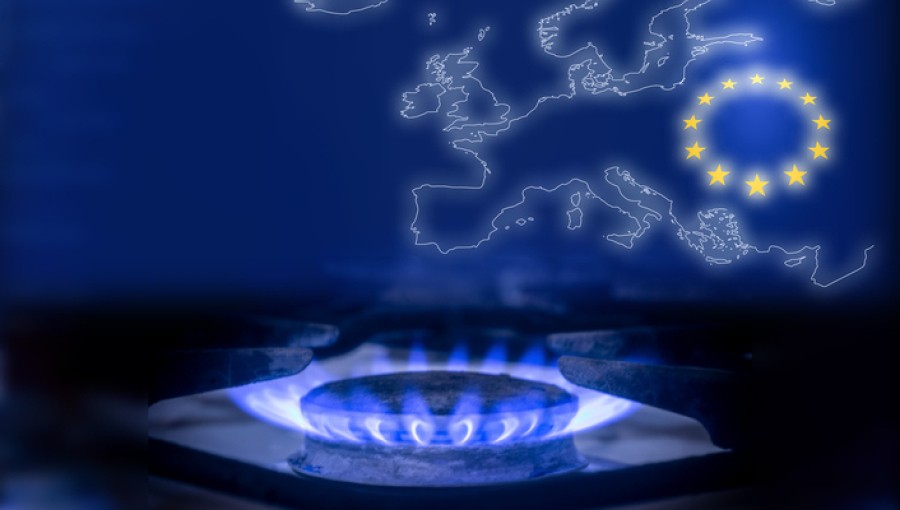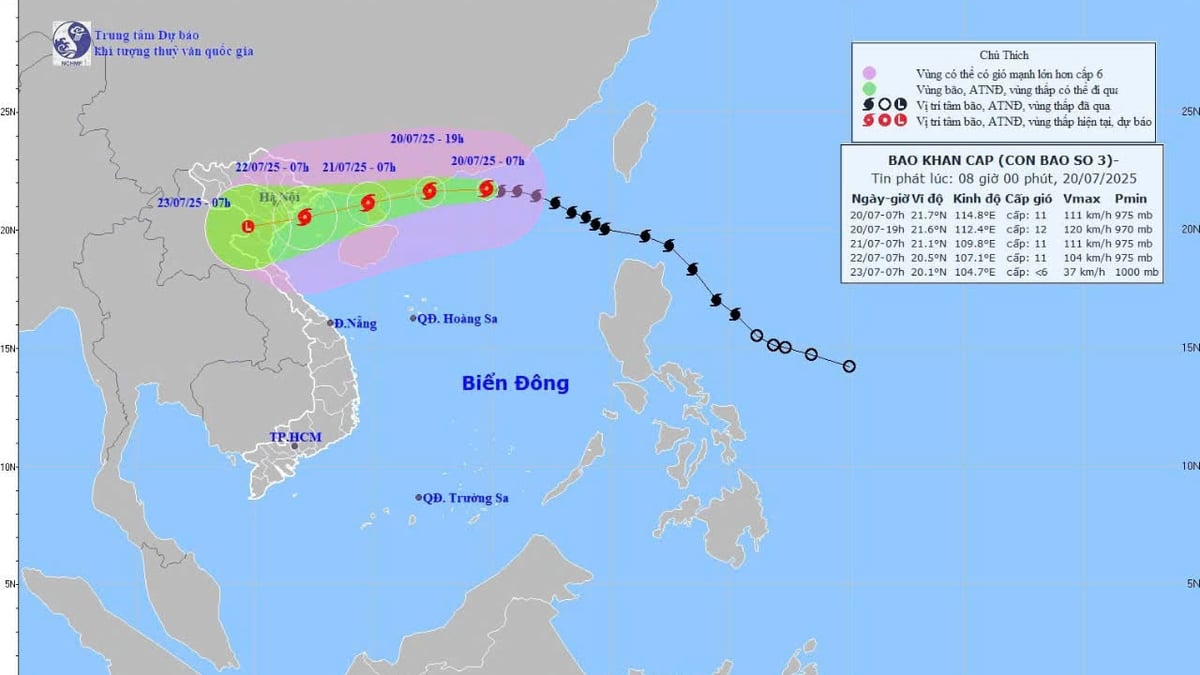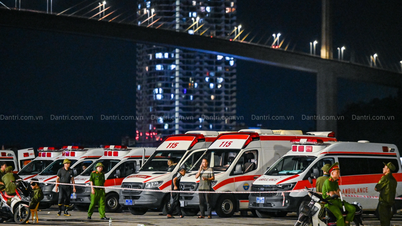In the context of the Russia-Ukraine conflict, fossil fuel-dependent markets such as the Netherlands face higher energy price volatility, while Spain is experiencing a slight decline, and some parts of Romania and Hungary are even “immune”.
 |
| Energy prices in Europe rose throughout 2021 and increased further after the Russia-Ukraine conflict broke out. (Source: INA) |
Three years ago, on February 24, 2022, Russia launched a special military operation in Ukraine. The conflict is still ongoing and has had a significant impact on energy prices, with the share of Russian pipeline gas in the European Union’s (EU) gas imports falling from more than 40% in 2021 to around 8% in 2023, according to the European Commission.
Even before the conflict broke out in 2021, energy prices in the old continent were already on the rise. While European governments implemented various policies to ease the impact on households, energy prices continued to rise gradually throughout 2021 and increased further after the Russia-Ukraine conflict broke out.
Choosing a base price for price comparison is a challenge. In this article, the authors use a range of comparisons based on the Household Energy Price Index (HEPI), compiled by Energie-Control Austria, MEKH and VaasaETT.
“One-year average before conflict” represents the 12-month period from February 2021 to January 2022, while “Three-year average after conflict” covers the period from February 2022 to January 2025.
Accordingly, in the pre-conflict period, the average electricity price for end users in EU capitals was 20.5 c€/kWh, and increased to 26.5 c€/kWh in the post-conflict period, an increase of 29.5%.
During this period, Amsterdam (Netherlands) saw the highest increase, with electricity prices increasing by 76%, followed by Rome, Italy (74%) and Vilnius, Lithuania (64%).
“Fossil fuel-dependent markets such as the Netherlands face higher volatility, highlighting the role of energy diversification and regulatory frameworks in stabilizing prices,” said senior experts at the Institute for European Energy and Climate Policy (IEECP), Ivana Rogulj, Wolfgang Eichhammer, Stavros Spyridakos and Vlasios Oikonomou.
Dr. Yousef Alshammari, President of the London School of Energy Economics , notes that natural gas accounts for 45% of Italy's electricity mix, while renewables contribute no more than 30%.
Among the capitals of Europe's top five economies, London (up 47%) recorded the second-largest increase after Rome. Paris (up 30%) was slightly higher than the EU average (29.5%), while Germany's Berlin (up 19%).
Impact of electrical structure
In contrast, Madrid saw a slight decrease in electricity prices (0.4%) between the period before and after the conflict broke out.
As for why Spanish households are less significantly affected by rising electricity prices, experts Rogulj, Eichhammer and Spyridakos explain: “Spain’s significant wind, solar and hydroelectric capacity has reduced its dependence on fossil fuels, reducing its exposure to external price shocks…
Spain's regulated electricity tariff has smoothed out price fluctuations by linking retail electricity prices to long-term wholesale market averages, protecting consumers from extreme short-term fluctuations."
When capitals outside the EU are included, Oslo (Norway) recorded the biggest drop, with electricity prices down 10%, followed by Budapest (-9%) and Bucharest (-8%). These cities have been remarkably immune to the general trend of rising electricity prices across Europe.
These results show that Western Europe and Northern Europe saw the sharpest increases in electricity prices, while capitals in the Baltic region and Eastern Europe also saw significant increases. In contrast, Southern Europe recorded more moderate price changes.
IEECP experts Rogulj, Eichhammer and Spyridakos said: "The Nordic countries benefit from renewable electricity generation (such as hydropower, geothermal and wind), which helps to reduce risks from fossil fuel price fluctuations."
Electricity prices before the crisis compared to now
Comparing electricity prices from early 2021, when the market was more stable and before tensions between Russia and Ukraine escalated, to January 2025, shows a significant increase. Households in EU capitals paid 36% more for electricity in January 2025 than in January 2021.
Excluding Kiev (Ukraine), Amsterdam recorded the highest increase, with electricity prices rising by 89% over the four-year period. Significant increases were also recorded in Vilnius (81%), Brussels in Belgium (77%) and Bern in Switzerland (76%). On the other hand, Budapest (-13%) was the only European capital where electricity prices fell.
Of the top five cities, London saw the highest increase, with electricity prices rising by 66%, followed by Rome (60%) and Paris (45%).
Comparing January 2022 to January 2025, household electricity prices, including taxes, increased by just 3.4% on average across EU capitals. In the EU, the highest increase was recorded in Vilnius (53%), followed by Paris (34%). In the non-EU capital Bern, prices increased by 69% over the same period.
Several cities have seen significant drops in electricity prices over the past three years, with Oslo seeing the biggest drop of 25%, followed by London (-21%), Bucharest (-20%) and Copenhagen (-20%).
 |
| As of January 2025, gas prices have fallen to 11.1 cents/kWh, slightly lower than in January 2022, but still significantly higher than before the conflict broke out. (Source: bne IntelliNews) |
High price volatility since conflict broke out
Electricity prices have fluctuated significantly in the capitals of the top five economies since February 2022.
Over the past four years, Rome has experienced its highest recorded level, reaching 68.7 c€/kWh in October 2022, compared to 43.7 c€/kWh in July 2022.
Similarly, London's electricity prices peaked at 64.2c€/kWh in August 2022, before falling to 39.5c€/kWh the following month. Paris had the most stable prices during this period.
How has the price of household gas changed ?
In October 2021, the average price of gas for end users in EU capitals was 8.5 c€/kWh. By January 2022, this figure had risen to 11.3 c€/kWh, before peaking at 16.5 c€/kWh in September of the same year, the highest level recorded in the past three years.
As of January 2025, gas prices have fallen to 11.1 c€/kWh, slightly lower than the January 2022 level, but still significantly higher than prices before the conflict broke out.
Stockholm (Sweden) recorded the highest average over the three years (February 2022 - January 2025) at 28.7 c€/kWh, followed by Amsterdam at 21.6 c€/kWh.
The nature of the Swedish gas market plays an important role in this dynamic.
Amsterdam was hit hardest by the gas price spike in 2022. Households in the Dutch capital were hit hardest by the gas price spike during the year. The average annual gas price here was 31.0 c€/kWh, significantly higher than Stockholm's 23.9 c€/kWh, although Stockholm led on the three-year average.
Senior experts Rogulj, Eichhammer and Spyridakos from IEECP also said that the increase in gas prices in the Netherlands was due to the production shutdown at the Groningen gas field due to earthquake risks.
Budapest (2.6 c€/kWh), Belgrade in Serbia (4.1 c€/kWh) and Zagreb in Croatia (4.7 c€/kWh) recorded the lowest three-year average gas prices.
In Prague (Czech Republic), the three-year average gas price is 110% higher than in October 2021, followed by Berlin (97%), Dublin (86%) and Amsterdam (77%), while the EU average is 37%.
Dr. Cyril Stephanos from the National Academy of Sciences and Engineering, pointed out that Germany had no liquefied natural gas (LNG) terminals operating at the time Russia launched its military campaign in Ukraine.
“Both Germany and Austria are heavily dependent on natural gas imports from Russia,” he said.
These supplies have been partially replaced by shipments from Norway and via the LNG market. “However, LNG imports tend to be more expensive than pipeline gas due to the additional costs of compression, transportation and decompression,” the expert added.
The IEECP experts also stressed that the search for costly alternatives has led to sharp price increases. In contrast, Budapest (-26%) and Bucharest (-9%) saw lower gas prices compared to October 2021.
Despite recent stabilization, gas prices in EU capitals are still 31% higher in January 2025 than in October 2021. Warsaw (Poland) saw the biggest increase (109%), followed by Lisbon in Portugal (77%) and Berlin (72%).
Gas prices fluctuated widely throughout 2022, with Amsterdam experiencing significant fluctuations. However, starting in 2023, prices were more stable than in 2022, especially in Amsterdam and the top 5 European economies.
Dr Alshammari explained that a number of measures taken across Europe have contributed to the drop in natural gas prices. These include filling gas storage to nearly 100% capacity, securing alternative suppliers, capping prices on Russian gas, allowing European countries to import, and implementing efficiency measures to reduce energy demand.
Professor Jan Osicka, director of the Energy Policy Research Programme at Masaryk University in the Czech Republic, believes that the EU has managed the crisis well, saying that “the solidarity mechanism has worked, the internal market is still functioning and its design has not been interfered with too much”.
However, Rogulj, Eichhammer and Spyridakos assert that long-term price stability depends on global supply dynamics and the acceleration of renewable energy integration, especially in the gas sector.
Source: https://baoquocte.vn/three-year-conflict-russia-ukraine-energy-increase-in-chau-au-tang-vot-van-co-noi-chang-lien-quan-day-chinh-la-ly-do-305794.html



































































































Comment (0)